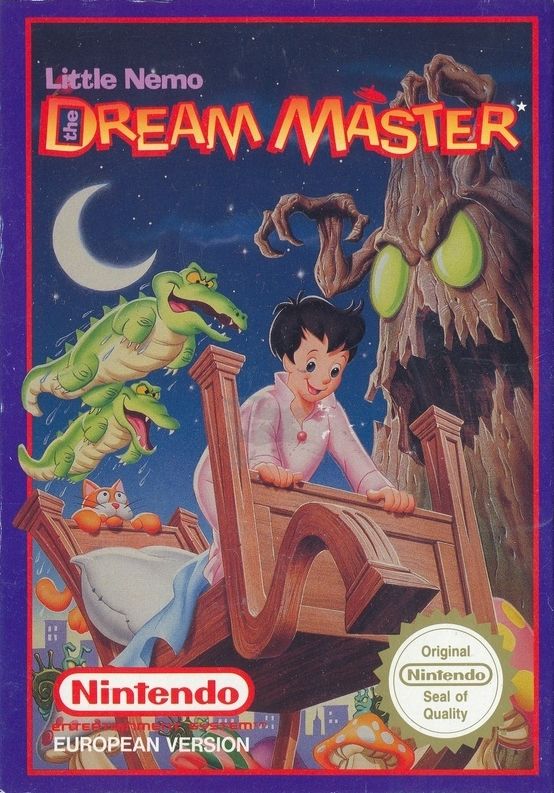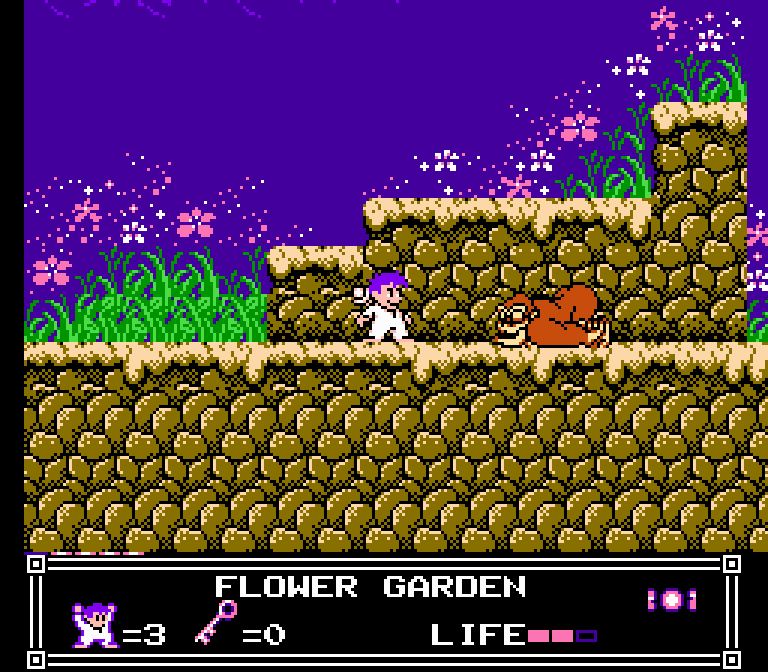Publisher: Capcom

(“I told you last night that you would dream if you ate those doughnuts.
But you would not listen.” -- Nemo’s Mother)

With the benefit of time, though, and a heightened cultural awareness of Winsor McCay’s signature work, revisiting Little Nemo: The Dream Master reveals a game packed to the brim with highly appropriate weirdness. Nemo feeds the various dream-creatures that he encounters with candy from an apparently bottomless bag, which not only tames them but, in proper dream fashion, turns them into frog- or bee- or mole-themed outfits for him to wear, with accompanying abilities. Nemo traverses a number of surprisingly large and creatively-designed levels, including an upside-down house, a speeding toy train and nighttime suburban rooftops, searching for keys to unlock the door at the end of each stage. The sheer number of possibilities engendered by the different animals Nemo tames in obtaining keys and solving puzzles is impressive, considering that the typical platformers of the day (even those produced by Capcom, who were widely regarded to be the masters of the 8-bit platformer genre) were fairly linear in construction.

Little Nemo: The Dream Master is not an easy game. There was no save option, no password entry screen, enemies spawned endlessly, and spikes and pits were unforgiving in their placement. Playing it again today is an exercise in frustration verging on masochism, until we remember that back in the day, every game was hard (although perhaps not quite this hard). In a world of walkthroughs, cheat codes and god mode, we’ve forgotten what it was like to be truly challenged by what amounts to a children’s game, and this is one of the reasons that Little Nemo: The Dream Master deserves to be remembered.
Little Nemo was released for the Nintendo Entertainment System in 1990, at the tail end of Nintendo era, and stands as one of the last great games for that console.
| (Following the end of the strip's run in 1927, Little Nemo was not officially seen in any media format (with the exception of reprints of the strip) until 1989, when the Japanese animated adaptation Little Nemo: Adventures In Slumberland was released, a period of 62 years. Little Nemo: The Dream Master was a licensed tie-in to that film, which did not receive a North American release until 1993, and even then to very little fanfare.) |

No comments:
Post a Comment